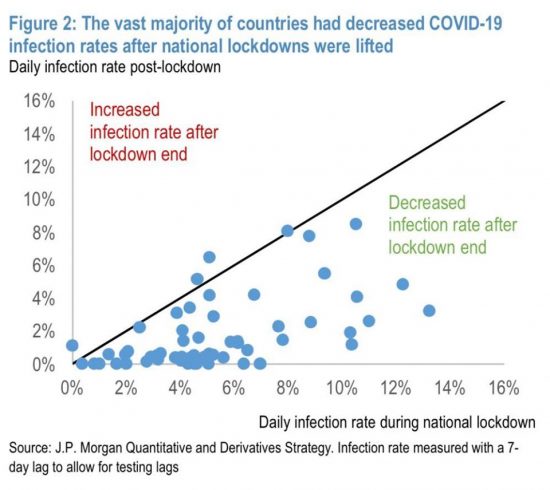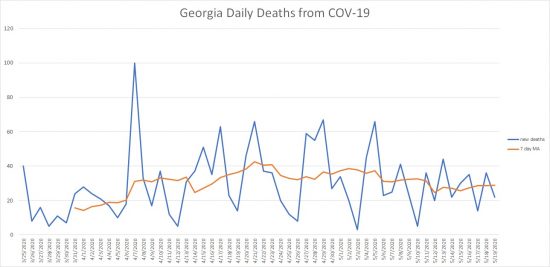This is data taken from a Twitter thread by Elon Bachman. Given Twitter’s history of suppressing information contrary to the MSM talking points, I’m reposting here in its entirety. I’ve modified the formatting for readability.
Two highlights courtesy of Shane Coombs:
* Using Google’s cell-phone location tracking data, there is a positive correlation between stricter lockdowns and higher death rates. This is consistent with what some epidemiologists have argued: mass quarantines will make it worse.
* The IHME model may have been so wrong because a poorly thought out criteria caused only countries with the worst outbreaks to be the foundation for it’s assumptions.
The Twitter Thread from Bachman
A bit of a speculative thread on why the @IHME_UW model has failed so catastrophically
To recap: hospitalizations for COVID-19 fell outside the IHME’s 95% confidence interval *twice* in one week, despite the IHME revising their model. The chances of this happening are like 0%
The common rejoinder is that “The model didn’t fail, social distancing just worked really well”
That’s cute bullshit. The IHME models assumed “full social distancing” from the outset. And if your model isn’t falsifiable, it isn’t a model
So, how DID the model fail so badly?
IHME built their model around two core assumptions, one reasonable and one disastrous:
A) That only countries past their peak in deaths should be considered. This is fair.
B) Lockdowns work, so since the US is locking down, only consider countries with lockdowns.
That “lockdowns work” seems too obvious to dwell on. But consider that lockdowns have costs as well as benefits:
Benefit: enforce social distancing outside the home
Cost: keep everyone at home, which is where a respiratory disease spreads most readily

Now, the crucial observation:
Most social distancing benefits of lockdown had ALREADY BEEN ADOPTED VOLUNTARILY
People are not totally dumb. When you scare them about a disease, they wash their hands more and avoid restaurants.
From Derek Thompson:
This synchronicity of the decline in restaurant bookings around the world—or, at least, among OECD nations with OpenTable—is remarkable.
Different distancing policies. Different outbreak rates. Different cultures. Different laws. And they all fell to zero in 15 days.
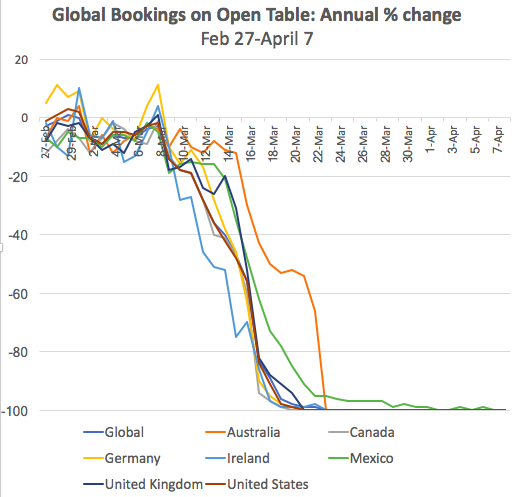
So, lockdowns force people to remain at home, where they infect each other
This may explain why lockdowns and death counts are *positively* correlated
Lockdowns are not a cause of improvement, they are a political reaction to large death counts
From ElGatoMalo:
i took these countries and calculated the variance in their social contact score.
this is an estimated value that i created by averaging the change in time at work, retail and recreation (inc bars, rests etc), in grocery, on public transit, and in parks.
i wanted one value.
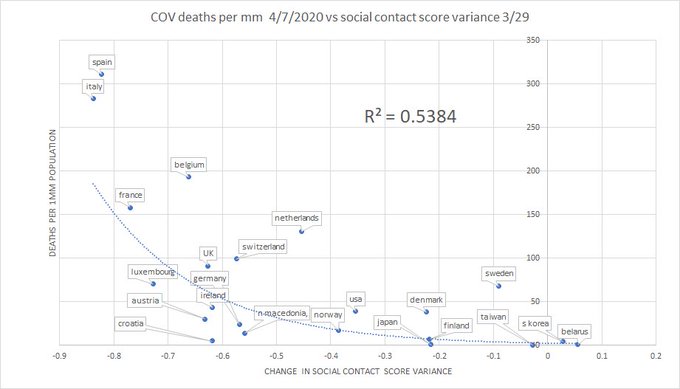
Consider what that means for the IHME model: Demography, climate, and lifestyle meant that Italy/Wuhan/Spain had bad outbreaks, so they were the first to lock down So, *only countries with bad outbreaks* were included in the model!
Bachman citing an earlier thread of his:
“I finally understand why the IHME model has been so wrong: it is based mostly on Wuhan, and a little on Spain and northern Italy.
It’s like making an actuarial table based on the Kennedy family “
As I’ve quipped elsewhere, IHME’s approach to modeling has been like basing an actuarial table off the Kennedy family
They are assuming the US is exactly like Wuhan, Lombardy, and Madrid, but nothing like Japan, Korea, Germany
No wonder their model fails within 48 hours!
The IHME model has another problem: it uses deaths on a “when reported” basis rather than a “when occurred” basis Because many municipalities experienced data backlogs in late March, early April has seen a global “catch up” in reporting:
Data oddity: NYC has been working through a backlog. So while daily reported cases and deaths have been setting records, much of that is just catching up on old data:
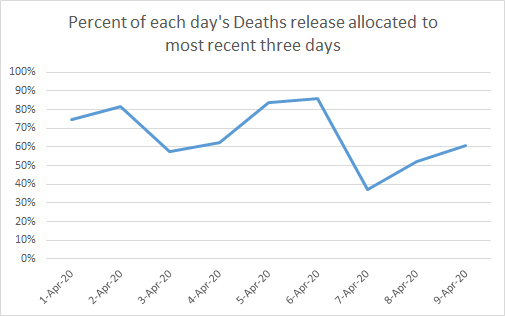
Summary: the @IHME_UW model is sophomoric hackwork. They will revise their US death forecast again this week, to below 60,000
Related: COVID-19 Projection Models Are Proving to Be Unreliable

